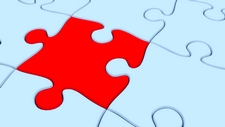Observable Patterns

TEKS Objective
The student is expected to make predictions based on observable patterns.
Essential Understanding
The student knows that information and critical thinking are used in scientific problem solving.
Science Background
Making Predictions, A Strategy for Reading and Science Learning: Beyond Weather and the Water Cycle (website) - Explains the relationship between predicting in reading and science, and between a predication and a hypothesis.
Playing with Magnets and Learning about the Property of Materials: NSTA Blog (website) - To make a prediction, one must apply prior knowledge while focusing on what he/she thinks will happen next. This brief article presents strategies for helping your students develop the skill of predicting.
Playing with Magnets and Learning about the Property of Materials
NSTA Blog, nstacommunities.org
Predictable Patterns: Explorit Science Center (website) - Explains how the ability to recognize a pattern can help students to predict what will happen next.
Predictable Patterns
Explorit Science Center, www.explorit.org
Signature Lesson
A Matter of Pattern: Science NetLinks (website) - Students create and predict patterns by making paper snowflakes. They learn that patterns may be predicted based on observation.
A Matter of Pattern
Science NetLinks, www.sciencenetlinks.com
- Supporting Lessons
- Extensions
- Assessment Ideas
- Literature Connections
- Related
TEKS - Additional Resources
Supporting Lessons
Science Fair Project Water Experiment: Easy-Science-Fair-Projects (website) - Students observe two cups of water, one with salt and one without. They predict which cup of water will freeze fastest, set the cups in a freezer, and communicate the results.
Science Fair Project Water Experiment
Easy-Science-Fair-Projects, www.easy-science-fair-projects.net
Floating and Sinking: Kids Science Experiments (website) - Students predict which objects will float or sink in water, test their predictions, record the data, and report the results.
Floating and Sinking
Kids Science Experiments, www.lovemyscience.com
Elaboration Lessons and Extensions
Floating Sponge: Kids Science Experiments (website) - Students predict whether or not a sponge will sink or float in water, and then test their predictions.
Floating Sponge
Kids Science Experiments, www.lovemyscience.com
Assessment Ideas
Divide students into groups of four and give each group a pre-cut, six-sided snowflake. Instruct groups to cut their snowflakes in half. Collect one half of each of the group’s snowflake and put those halves on a table. Then have each group come to the table and identify the match to its snowflake half.
Literature Connections
Wind & Weather. Onish, Liane, ed. (ISBN-13: 978-0590476461)
Geoffrey Groundhog Predicts the Weather. Koscielniak, Bruce (ISBN-13: 978-0395883983)
Same Old Horse, Murphy Stuart (ISBN-13: 978-0060557713)
Bow-Wow Orders Lunch. Newgarden, Mark (ISBN-13: 978-0152058296)
Why Do Leaves Change Color? Maestro, Betsy (ISBN-13: 978-0064451260)
Learning About Leaves. Wrazen, Shanna (ISBN-13: 978-0823981021)
No Roses for Harry. Zion, Gene (ISBN-13: 978-0064430111)
Additional Resources
Lessons on Predictions for First Grade: eHow (website) - Several ideas for activities aimed to enhance and assess students’ abilities to make predications.
Lessons on Predictions for First Grade
eHow.com
Science Activities in Early Childhood Prepare for a Lifetime of Learning: National Science Teachers Association (website) - Children benefit from exposure to science situations in which they experience the world, describe what they see, collect and record data, ask questions, and make predictions based upon available information. Read more about how to help students become life long questioners.
TEKS Navigation
Grade 1
Need Assistance?
If you need help or have a question please use the links below to help resolve your problem.

Comments